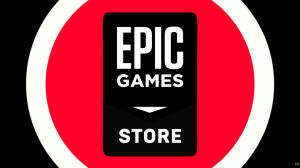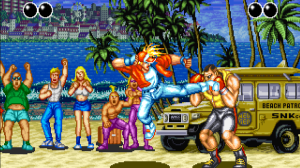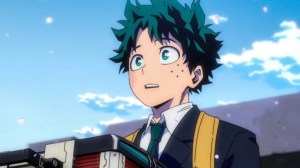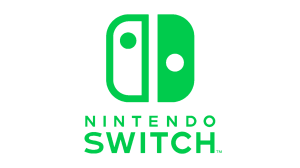
Listen up, squiddos. I’m giving Splatoon 2 a 5 out of 5, so if you just came in here for the review score, let me save you a few seconds of scrolling. “What a fanboy,” I hear you say. You’re right. I loved the first Splatoon; I was over the moon when Splatoon 2 was revealed; I went into this review with no shortage of hype, and very high expectations. Unlike most of you, I was hoping more than anything that Splatoon 2 would be iterative and not drastically different from the first. I wanted so much more of the same, but with new settings, new gear, new characters, and new modes. Splatoon 2 delivered on every front.
Videos by ComicBook.com
Let’s begin with the basics . In Splatoon 2 you’ll take control of a super hip kid that can transform into a squid at a moment’s notice (or is it a squid that can turn into a kid?). In kid form, you’ll deck yourself out from head to toe with the freshest clothes and gear from the coolest brands that dominate the pop culture in Inkopolis. In the city square you’ll see your peers dressed in outfits as varied as the spectrum of color. Everyone is concealing their weapon of choice, something to take into turf war: the ultimate competitive gauntlet.

In squid form, you’re able to swim at incredible speeds through the ink that you and your team shoot from your weapons, which covers the various play-scapes in which you compete. Though there are various other modes and ways to play, turf war is at the heart of Splatoon as the flagship competitive experience. For many of you, sprinting out of that spawn terminal and deftly dipping and turning your controllers to smother the environment with color will feel intimately familiar. For others, Splatoon 2‘s controls will present a very familiar and oft-criticized challenge.
About Those Controls…

So let me be perfectly clear. The gameplay in Splatoon 2 has not changed except in very minor ways: having the map and super jump controls now mapped to face buttons instead of the Wii U game pad is one such change. The core mechanics remain pristine and undisturbed, and Splatoon 2 will encourage you by default to use the gyro sensors in the Joy-Con or Pro Controller for aiming. Many people find this very awkward at first, and quickly switch over to dual-stick controls while constantly fiddling with sensitivity options to try to get the feeling right.
Don’t do this. “Motion controls aren’t for everyone,” I hear you say. “I’ve just always hated them,” you rebut. Just trust me on this one, guys and gals. You’ll want to get used to Splatoon 2‘s motion controls as quickly as possible because, when you do, you’ll feel complete freedom and lucidity in your movement, control, and aim; a lucidity and precision that you’ve probably never experienced in a console shooter before.
Once you get the hang of using the right stick solely for panning left and right in broad sweeps, and using gyro for all of your aiming and fine tuning, you’ll never ever want to go back to dual-stick controls. Splatoon 2’s controls are perfect, and after a few hours I think you’ll find they rival the confidence afforded to PC gamers sitting behind mice and keyboards.
A Full Platter

Splatoon 2 boasts one of the most competent single-player campaigns Nintendo has ever composed. I say this while openly acknowledging that the story itself is as shallow as a puddle of ink. You won’t be shedding any tears or writhing in shock over an unseen plot twist; the story is very much meant to be consumed with the same kind of lighthearted amusement that makes a Saturday morning cartoon enjoyable.
The true joy in Splatoon 2‘s story campaign is in playing through it. Nintendo has always been about surprising players with unique gameplay experiences, and I can think of very few games from any developer or publisher that offer as much polish or variety as this one. I enjoyed the single-player campaign in the original Splatoon, but the stages felt a little amateur; like a proof-of-concept or prolonged tutorial.
Splatoon 2 has truly come into its own, and exhibits a grace and expertise in its stage design that deserves special recognition. Every single stage feels like its own miniature world, and you’ll eventually have the chance to play through every single stage in multiple ways using a huge variety of weapons for vastly different experiences. It reminds me very much of the two Super Mario Galaxy games in that regard, and I can think of no higher praise.

Of course, if you played the original Splatoon then you know that you can count on some far-out boss battles and a riveting final showdown. Splatoon 2 has stepped up its boss design as well. You’ve likely seen a few of the bosses already in promotional material, and I can tell you that they’re just as much fun to fight as they are to gawk at, especially in the late-game. The final showdown and ending credits will leave you begging for more.
Switching It Up!
Splatoon 2 offers much more variety than its Wii U counterpart. If you participated in the Splatfest demo and came away worried that you may get tired of playing nothing but turf war, rest assured that there is so much more to do here. As far as multiplayer modes are concerned, in addition to turf war you have three separate game modes in Ranked Battle: Splat Zones, Tower Control, and Rainmaker.
Each mode is radically unique and will require a significant shift in strategy and approach, so try to recruit some friends or meet new ones that you can form a squad with. Teamwork will be absolutely vital to your success. More experienced competitive players will eventually rise up to join the ranks of League Battle.
HORDE MODE!

There’s a brand new cooperative multiplayer mode that can be played locally or online called “Salmon Run,” and this has been perhaps the biggest surprise for me outside of the single-player campaign. In Salmon Run you and three team mates will be assigned random weapons, and attempt to defeat waves of “Salmonids” for power eggs (currency) and experience.
With each wave of foes there will come one (or more) boss. There are seven bosses that can appear in Salmon Run, and each one has its own unique attack patterns and weaknesses that you will have to work together to exploit. These guys are deadly, and are much more capable of wiping out the entire team than the numerous Salmonid scrubs that swarm the shores. Taking out these big baddies is key, since they drop the special Golden Eggs that you’re there to collect. In order to advance to the next wave, you have to meet a minimum quota of Golden Eggs and survive the collection process. Survive all three waves, and you’ll be handsomely rewarded.
Salmon Run provides a seriously refreshing and aptly challenging alternative to the already-varied multiplayer lineup. I have a feeling that many of you will make a point to squad up with your friends every time Salmon Run goes live, and it could very well end up being your favorite mode in the game. We know that Nintendo is going to support Splatoon 2 with free content updates for a very long time, and I hope that we see additional bosses, features, and stages come to Salmon Run; it’s a brilliant addition to the franchise.
That’s a Wrap

I find it’s a near impossible challenge trying to convince a newcomer or passerby of what makes Splatoon 2 such a unique pleasure. This game has its own culture, and it takes a while to become blissfully immersed in that culture. Someone making a judgement call about Splatoon based on a few rounds played during a Splatfest demo would be like someone making a judgement call about France after spending a night at the airport in Paris.
Y’all need to come stay a while; swim with the locals; become familiar with the brands, weapons, rites, and rituals that make this kaleidoscopic world turn. If you’re willing to do that, then I think you’ll find that Splatoon 2 offers a competitive and cooperative escape unlike any game you’ve ever played. It’s a chromatic, multicolored masterpiece, and a sensory rush worth indulging in.
WWG’s Score: 5/5









